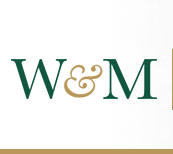Date Thesis Awarded
4-2016
Access Type
Honors Thesis -- Access Restricted On-Campus Only
Degree Name
Bachelors of Science (BS)
Department
Physics
Advisor
Irina Novikova
Committee Members
Henry Krakauer
Kristin Wustholz
Abstract
Light entanglement holds the potential for quantum telecommunication and quan- tum computing. The goal of the project is to produce a pair of polarization-entangled light fields using Four Wave Mixing (FWM) in hot Rb vapor. In this process interaction of atoms with near-resonant strong control optical field results in strong amplification of a probe optical field and in generation of a quantum correlated conjugate Stokes opti- cal field. The optimum parameters for FWM have been established. Through analysis of the noise, the RF settings allowing for experimental quantum noise to match the shot noise has been confirmed as well. After establishing the shot noise limit, there were many trials to achieve noise lower than the shot noise. To further improve the noise and thus establish the quantum correlation between our fields, we switched from a single laser to a double laser setup. In the future, the quantum correlation between the Stokes field and the probe field will be further improved to allow for the entangled Bell states creation.
Recommended Citation
Bauser, Haley, "Light Entanglement via Four Wave Mixing through a Rubidium Vapor Cell" (2016). Undergraduate Honors Theses. William & Mary. Paper 996.
https://scholarworks.wm.edu/honorstheses/996
Creative Commons License

This work is licensed under a Creative Commons Attribution 4.0 License.



